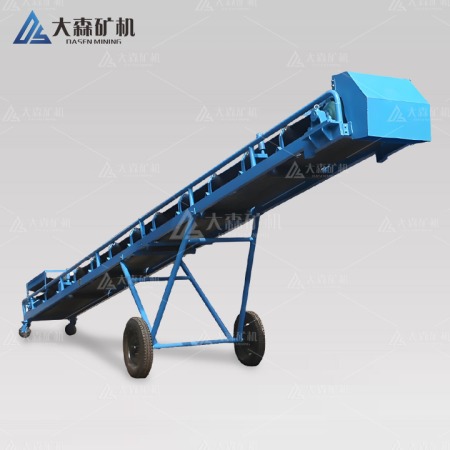Description
Product: Belt Conveyor, Electric conveyor belt, Mobile conveyor belt
Captain: 30000-50000mm
Machine height: inclination 5-30 degrees
Conveyor level machine high bandwidth: 10mm-4000mm
Speed: 0-36mm/min
Power: 0.37/kw-3kw
Applicable fields: mining, metallurgy, coal and other industries.
Belt conveyors are continuous transportation systems equipped with traction components. Primarily utilized in industries such as coal, metallurgy, non-ferrous metals, and cement, they have seen a significant increase in transportation costs. However, belt conveyors offer numerous advantages including increased efficiency, automation, continuous operation, high speed, simplified processes, improved hygiene, and enhanced safety. They are widely used to transport bulk, granular, and packaged materials in industrial settings.
Belt conveyor systems can be customized with accessories like lifting baffles and skirts to accommodate various process requirements. Their versatility is showcased in different configurations including grooved, flat, inclined, and curved belt conveyors. Additionally, they can be integrated into assembly lines for industries like electronics and food packaging by incorporating workstations and lighting along the conveyor path. Belt conveyors can be driven by either geared motors or electric drums.
Working Principle
A belt conveyor consists of a conveyor belt running over two rollers: the drive roller and the return roller. The drive roller, powered by a motor through a reducer, propels the conveyor belt via friction. Typically located at the discharge end, the drive roller enhances traction and material movement. Materials are fed onto the moving conveyor belt at the inlet and discharged at the outlet.
Features
Belt conveyors offer several advantages over other transportation methods, including long conveying distances, high capacity, continuous operation, reliability, and ease of automation. These characteristics make them indispensable in coal mining mechatronics.
Belt conveyors exhibit flexibility in configuration. They can be extended or shortened using a belt storage bin to adapt to changing mining conditions. The lightweight and modular frame allows for easy assembly and disassembly. For demanding applications requiring high capacity or long distances, intermediate drive units can be incorporated.
Depending on the specific conveying needs, belt conveyors can operate independently or as part of a larger system, including horizontal or inclined configurations.
| Belt width (mm) | Belt length(mm)/Power(kw) | Belt speed(m/s) | Capacity(t/h) | ||
| B400 | ≤12/1.5 | 12-20/2.2 | 20-25/3.0 | 0.8-2 | 30-60 |
| B500 | ≤12/3 | 12-20/4.0 | 20-30/5.5 | 0.8-2 | 40-80 |
| B650 | ≤12/4 | 12-20/5.5 | 20-30/7.5 | 0.8-2 | 80-120 |
| B800 | ≤12/4 | 10-15/2.5 | 15-25/7.5 | 1.0-2 | 120-200 |
| B1000 | ≤10/5.5 | 13-20/7.5 | 10-20/7.5 | 1.0-2 | 200-320 |
| B1200 | ≤10/7.5 | 10-20/11 | 10-20/7.5 | 1.0-2 | 290-480 |
The belt conveyor is a critical component of the filter press. The quality of the conveyor belt significantly impacts the overall lifespan and performance of the equipment. As a consumable part, regular belt replacement is essential. To maximize efficiency, extended-length belts are often employed.
We can provide you with more information about Gold Ore Plant Solution. If you have any questions, please contact:
Whatsapp:+86 133 1927 7356
Email:[email protected]






